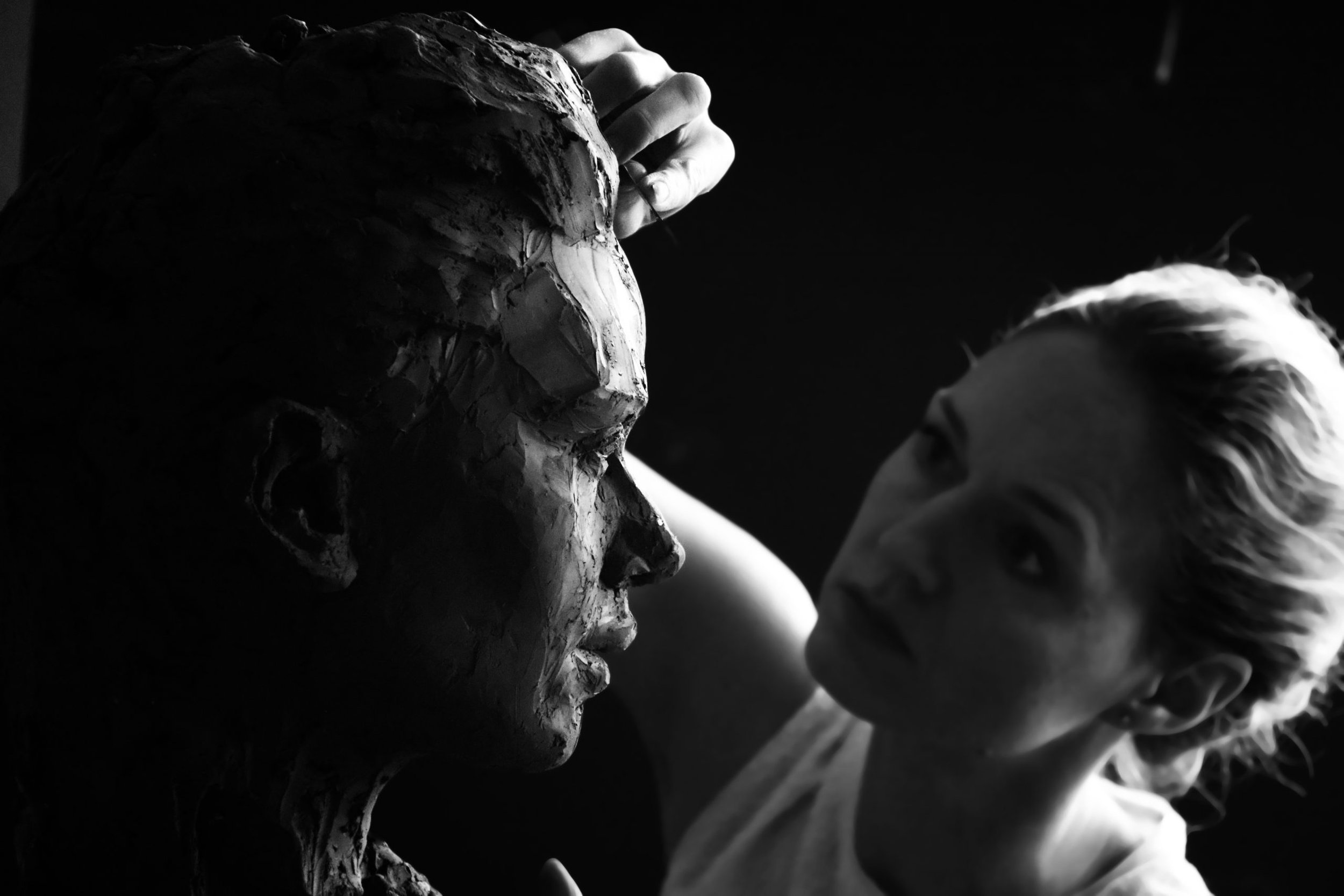Turning Point
Turning Point
Sculptor Alexandra Piasecka discusses her journey to discovering her inner identity and voice as an artist.
Aleksandra Piasecka is a Warsaw-based sculptor and architect who's carving out a distinct and expressive style that reflects her unique journey and path as an artist. Here she speaks about her transition from profesional architect to sculptor, and how she's discovering her own distinct voice through the process of developing her craft.
How does your background as an architect inform your work as a sculptor?
Before studying architecture, I studied sculpture for five years at an art high school. Both architecture and sculpture require craftsmanship, as only through the development of a strong technical foundation can one achieve true creative freedom. Both fields also work heavily with form, and although they differ in scale, they both evoke emotion and require imagination.
However, creating an architectural form requires a whole team of people with a vision —from the developer to the urban planner, the architect to the authorities and even the neighbors, it is quite a distinct and involved process— as where the artistic process of the sculptor is much more individual.
While sculpting I feel independent, and am able to surrender to my own instincts… this can be an advantage, but also a kind of risk. During the process of creation I’m alone—I don't have to deal with continuous external evaluation, so although I have great freedom, I can also easily go astray.
It’s an extremely engaging and exciting craft, yet it also involves many challenges and sacrifices, perhaps the biggest of which is the sense of loneliness its solitary nature brings.
What inspired you to shift your energies to focus primarily on sculpture?
I started my professional career in renowned Parisian architectural studios. For the first time in my life I had to deal with people with strong visions, people that were uncompromisingly pursuing their goals. This awakened within me the desire to find my own vision and to realize my own ideas. I started with small architectural projects, interiors, gardens… then I designed and oversaw construction of the multi-family estate "Jardin des Arts" in Hyeres les Palmiers on the Côte d'Azur. The project involved the development of three buildings, with a total of 84 apartments.
Bringing this project to life was greatly satisfying for me. However, I learned first-hand how architectural creation is limited by economic constraints, mainly restricted by the developers’ financial objectives. I decided I wanted to move away from these constraints. Although I thought about returning to sculpture while working as an architect, the decisive moment for me to take up sculpture full-time was when I created my work "Ray of light" (a 2 meter high woman’s face).
This work became a full-time exhibition at the “Jardin des Arts” apartment complex; the light of southern France has inspired and attracted artists for centuries, and "Ray of light" depicts the moment of exposing one's face to the sun, a moment of truly connecting with its energy and drawing strength from it. This sculpture is my turning point, my drawing on energy and finding courage within myself.
How would you describe your sculptural approach and style?
I think that I’m still in the process of finding my style. Over the years I’ve accumulated a lot of ideas and emotions. Now that I’ve decided to open my studio I am trying, with some haste, to express them. However, sculpture takes time. Each work takes many days and sometimes months of work.
I love working in clay because with it the creative process has very different stages. Starting from the dynamic, emotional beginning to the precise delicate retouching at the end. It's like constantly putting your character to the test. It requires strength and determination at one moment and then delicacy and patience in the next.
The most arduous moment, but decisive for the final result, is the patination of the bronze castings. Not only precision counts here, but also knowledge of chemistry and years of practice.
How do you decide which themes to focus on, and what works have you created that you feel are particularly resonant with these themes?
I could divide my works into two groups—the first group is composed of spontaneous works created under the influence of the moment, and the second includes works that are more of a reflection on issues that affect me in some way.
A collection of works I feel is particularly representative of the first group is called the “Woman Beeing” series, which is a consideration of emotions; I express and analyze my own experiences through each work, hence the heroine of the sculptures is always a woman.
For now the most important work for me from this series is "Tipping point". It represents a turning point, a stepping into the unknown, which requires great determination and courage. A moment when any scenario is still possible, a moment when we are experiencing both fear and hope. The surface of the sculpture is the boundary between the fall and the road to success—the face partially covered by the swirling matter can draw energy from it, or be swallowed up irretrievably.
This is the dominant feeling of the last two years of my life, and through these works I have tried to capture and express this moment in time through my art.
— Follow the work of Aleksandra Piasecka on Instagram and at aleksandrapiasecka.com —






















